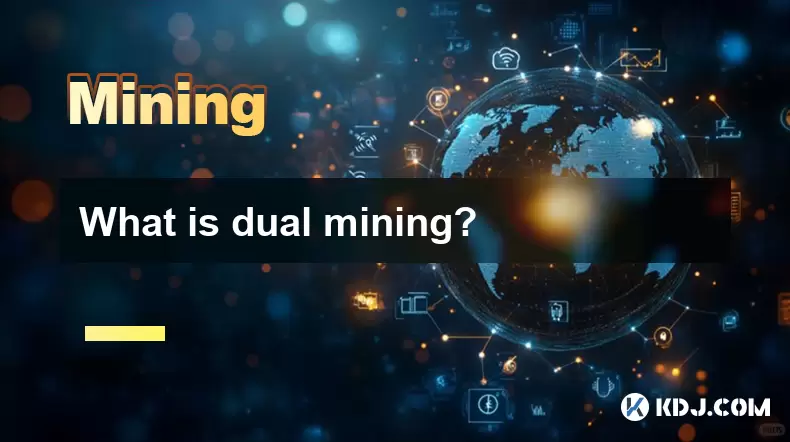-
 Bitcoin
Bitcoin $120400
1.77% -
 Ethereum
Ethereum $3615
7.90% -
 XRP
XRP $3.580
17.84% -
 Tether USDt
Tether USDt $1.001
0.06% -
 BNB
BNB $729.4
1.25% -
 Solana
Solana $179.9
5.04% -
 USDC
USDC $0.0000
0.01% -
 Dogecoin
Dogecoin $0.2311
8.22% -
 TRON
TRON $0.3226
4.04% -
 Cardano
Cardano $0.8490
12.85% -
 Hyperliquid
Hyperliquid $46.45
0.72% -
 Stellar
Stellar $0.4913
8.54% -
 Sui
Sui $4.027
2.00% -
 Chainlink
Chainlink $18.51
11.67% -
 Hedera
Hedera $0.2818
21.51% -
 Avalanche
Avalanche $24.03
7.40% -
 Bitcoin Cash
Bitcoin Cash $508.5
2.90% -
 Shiba Inu
Shiba Inu $0.00001496
3.24% -
 UNUS SED LEO
UNUS SED LEO $8.961
1.83% -
 Toncoin
Toncoin $3.264
3.13% -
 Litecoin
Litecoin $104.6
8.15% -
 Polkadot
Polkadot $4.389
6.11% -
 Uniswap
Uniswap $9.924
10.63% -
 Monero
Monero $337.9
0.49% -
 Pepe
Pepe $0.00001376
2.79% -
 Bitget Token
Bitget Token $4.830
2.46% -
 Ethena USDe
Ethena USDe $1.001
0.05% -
 Dai
Dai $1.000
0.02% -
 Aave
Aave $325.2
1.66% -
 Bittensor
Bittensor $423.7
-0.85%
What is dual mining?
Dual mining allows miners to simultaneously mine two cryptocurrencies using the same GPU, maximizing hardware efficiency and increasing profitability.
Jul 12, 2025 at 06:35 am

Understanding the Concept of Dual Mining
Dual mining refers to the process of simultaneously mining two different cryptocurrencies using the same hardware. This method allows miners to maximize their resource utilization by leveraging the idle capacity of their mining rigs to generate additional income. The core idea is that while a GPU or ASIC is dedicated to mining one blockchain, it can also contribute hashing power to another network without significantly affecting the primary mining operation.
Unlike traditional mining setups where a single algorithm or cryptocurrency is targeted at a time, dual mining splits the computational workload across two chains. This approach is especially popular among GPU miners, as modern graphics cards are versatile enough to handle multiple algorithms in parallel.
The key benefit lies in optimizing energy consumption and increasing overall profitability.
How Does Dual Mining Work?
Dual mining operates by utilizing different components of the GPU for each mining task. For instance, while the main processing units are focused on mining Ethereum using the Ethash algorithm, the memory (VRAM) or secondary cores may be used to mine another coin like Decred or Siacoin using alternative algorithms such as Dagger-Hashimoto and Blake256, respectively.
Most dual mining software works by:
- Allocating specific threads or compute units to each algorithm
- Running both mining processes concurrently without interference
- Connecting to separate pools or nodes for each cryptocurrency
This setup doesn't require additional hardware investment but does demand careful configuration to ensure optimal performance and stability.
Popular Cryptocurrencies for Dual Mining
Certain combinations of cryptocurrencies have become standard for dual mining due to their compatible algorithms and minimal resource overlap. Some widely adopted pairs include:
- Ethereum + Decred: Ethash (primary) and Blake256 (secondary)
- Ethereum + Siacoin: Ethash and Blake2b
- Zcash + Ethereum: Equihash and Ethash
These combinations allow miners to utilize different aspects of the GPU — for example, while Ethereum uses more VRAM, Decred utilizes the ALU units more efficiently. This balance ensures that neither process hampers the other significantly.
It's crucial to research which coins offer the best returns based on current market prices, difficulty levels, and pool fees before choosing a pair.
Setting Up Dual Mining: A Step-by-Step Guide
To begin dual mining, follow these steps carefully:
- Choose compatible mining software, such as Claymore’s Dual Miner or PhoenixMiner, which support dual mining natively.
- Download and install the software on your system, ensuring compatibility with your GPU drivers and operating system.
- Configure the batch file or config file with the wallet addresses, mining pools, and algorithms for both cryptocurrencies.
- Allocate appropriate intensity or thread settings for each coin to maintain system stability and avoid overheating.
- Launch the miner and monitor performance using tools like MSI Afterburner or HWInfo64.
Each step must be followed precisely to avoid errors or inefficiencies. Misconfiguration can lead to reduced hashrates or crashes.
Potential Risks and Considerations in Dual Mining
While dual mining offers increased earnings potential, it also comes with certain risks and trade-offs:
- Increased power consumption can offset some of the gains if electricity costs are high.
- Higher GPU temperatures may shorten the lifespan of hardware components if cooling systems are inadequate.
- Potential instability due to conflicting workloads or incompatible algorithms.
- Reduced solo mining effectiveness since dual mining typically requires connection to public pools.
Miners should conduct thorough testing and benchmarking before committing to a long-term dual mining strategy.
Frequently Asked Questions (FAQs)
Q1: Can I dual mine with an ASIC instead of a GPU?
Currently, most ASICs are designed to mine only one specific algorithm and cannot perform dual mining. GPUs remain the preferred choice due to their flexibility and multi-algorithm capabilities.
Q2: Do I need separate wallets for each cryptocurrency when dual mining?
Yes, you must use separate wallets for each coin you mine. Each mining pool will require its respective wallet address to credit your earnings correctly.
Q3: Will dual mining slow down my primary mining performance?
There may be a slight decrease in performance for the primary coin due to shared resources, but this is usually minimal and often outweighed by the added income from the secondary coin.
Q4: Are there any legal concerns with dual mining?
As long as you're mining legitimate cryptocurrencies and following local laws regarding cryptocurrency operations, dual mining is entirely legal. Always ensure compliance with regional regulations.
Disclaimer:info@kdj.com
The information provided is not trading advice. kdj.com does not assume any responsibility for any investments made based on the information provided in this article. Cryptocurrencies are highly volatile and it is highly recommended that you invest with caution after thorough research!
If you believe that the content used on this website infringes your copyright, please contact us immediately (info@kdj.com) and we will delete it promptly.
- Bitcoin, Crypto Wallets, and Security: Staying Safe in the Wild West of Digital Finance
- 2025-07-18 16:30:12
- Bitget Launchpool Heats Up with Caldera (ERA) Token Rewards!
- 2025-07-18 16:50:12
- XLM Bullish Chart: Analyst Sees Stellar Opportunity
- 2025-07-18 17:10:13
- Memeclip Presale: The 100x Potential CT Degens Are Buzzing About
- 2025-07-18 16:30:12
- Twitter, Investors, and PENGU Trade: Decoding the Signals
- 2025-07-18 17:10:13
- DeFi Liquidity on Fire: Kadena's Chainweb EVM Heats Up!
- 2025-07-18 17:15:13
Related knowledge

How are crypto mining profits taxed?
Jul 14,2025 at 12:28am
Understanding Cryptocurrency Mining and TaxationCryptocurrency mining involves validating transactions on a blockchain network and earning rewards in ...

How to keep a mining rig cool
Jul 12,2025 at 01:42pm
Understanding the Importance of Cooling in Mining RigsCryptocurrency mining is an intensive process that places heavy demand on hardware components, p...

How to mine crypto on a gaming PC
Jul 16,2025 at 12:00pm
What is Crypto Mining on a Gaming PC?Crypto mining involves using your computer's processing power to validate transactions on a blockchain network. A...

How to set up a crypto miner
Jul 16,2025 at 09:14am
Understanding Ethereum Gas Fees: What Are They and How Do They Work?Ethereum gas fees are a fundamental aspect of the network, representing the cost r...

Can you mine crypto on a laptop?
Jul 16,2025 at 02:21am
Is It Feasible to Mine Cryptocurrency on a Laptop?Mining cryptocurrency on a laptop is technically possible, but feasibility depends heavily on the ha...

Is crypto mining worth it?
Jul 16,2025 at 01:21am
Understanding the Basics of Crypto MiningCrypto mining refers to the process of validating transactions on a blockchain network by solving complex mat...

How are crypto mining profits taxed?
Jul 14,2025 at 12:28am
Understanding Cryptocurrency Mining and TaxationCryptocurrency mining involves validating transactions on a blockchain network and earning rewards in ...

How to keep a mining rig cool
Jul 12,2025 at 01:42pm
Understanding the Importance of Cooling in Mining RigsCryptocurrency mining is an intensive process that places heavy demand on hardware components, p...

How to mine crypto on a gaming PC
Jul 16,2025 at 12:00pm
What is Crypto Mining on a Gaming PC?Crypto mining involves using your computer's processing power to validate transactions on a blockchain network. A...

How to set up a crypto miner
Jul 16,2025 at 09:14am
Understanding Ethereum Gas Fees: What Are They and How Do They Work?Ethereum gas fees are a fundamental aspect of the network, representing the cost r...

Can you mine crypto on a laptop?
Jul 16,2025 at 02:21am
Is It Feasible to Mine Cryptocurrency on a Laptop?Mining cryptocurrency on a laptop is technically possible, but feasibility depends heavily on the ha...

Is crypto mining worth it?
Jul 16,2025 at 01:21am
Understanding the Basics of Crypto MiningCrypto mining refers to the process of validating transactions on a blockchain network by solving complex mat...
See all articles

























































































